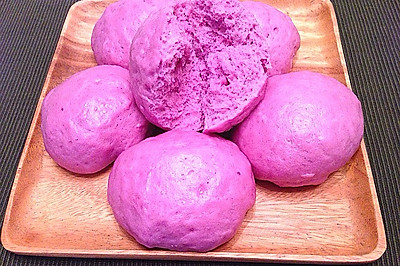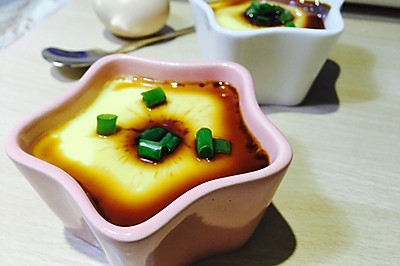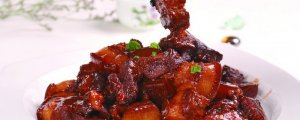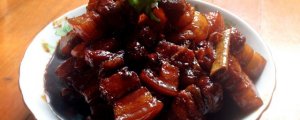
Pumpkin steamed bread - how to make large steamed bread with soft and fluffy texture
(77649 views)
I have made countless steamed bread. After countless failures, this time I finally achieved the effect I wanted. At the moment when I opened the lid of the pot, I presented a plump steamed bread. I could hardly describe my mood with my heart in full bloom, ecstasy and cheerfulness. At that time, I was excited. I picked up my camera and snapped a lot of photos. I shared them in the circle of friends... Of course, good things need to be shared. Today, I summarized my own experience and know-how to sort out and share with you. It's worth noting that steamed buns or steamed buns should never use boiled water or hot water. This will be counterproductive. Because the cold dough meets the water vapor of hot water and forms the situation of external heat and internal cooling. It's easy to make the buns sandwich. Putting cold water in the steamer is the right way. Gradually heating up in this way can make the buns evenly heated. The steamed buns are soft and delicious~
Cooking ingredients
Cooking Steps

Step1:Peel the pumpkin.

Step2:Slice it. Put it in a steamer. Steam it over high heat for 15 minutes and it will ripen.

Step3:Some distilled water will flow out of the steamed pumpkin. Pour it out of the bowl. Cool the water temperature to about 30 degrees. Put a little yeast powder. In case it is not wet enough, add dough. (pumpkin water is more practical than water. It also naturally adds fragrance.)

Step4:Mash the pumpkin while it's hot.

Step5:Add sugar. Stir well. Let it cool for a while.

Step6:Take out the flour and yeast powder.

Step7:Cool pumpkin puree to about 30 ° - 40 °. Pour in yeast powder. (do not put yeast powder when it is too hot, so as not to burn the active yeast

Step8:Leave a little yeast powder and pour it into the pumpkin water in the bowl (it turns out that the humidity of pumpkin is relatively high. No water is added. The reserved yeast water is not needed at all. However, the amount of yeast water usually used is different. This method is still recommended).

Step9:Pour in flour in batches. Add flour when it is too wet. Add yeast water when it is too dry.

Step10:Knead into a big dough. The effect is called the state of three lights - face light, basin light and hand light. The dough is as soft as possible.

Step11:Put on the plastic wrap. Put it in the microwave oven. Cover the door to let it ferment naturally (the water storage tank in the microwave oven should have water. Keep the internal moist environment. Without the water storage tank, you can use a cup to hold a little water and put it inside

Step12:The temperature of the day was 20-27 ° C. after fermentation for 2 hours and 30 minutes, the dough expanded more than twice as much as before.

Step13:Open the surface. See dense honeycomb.

Step14:Sprinkle some dry flour on the chopping board. Take out the dough and knead it repeatedly. If it feels particularly wet during the process of kneading, stick it on the chopping board. Also sprinkle some dry flour. Squeeze out the bubbles in the dough. About 20 minutes.

Step15:Take out part of the dough. Put the rest of the dough into the basin. Cover it with a wet cloth to prevent it from drying.

Step16:Then knead it into a dough stick and cut it into steamed bread plums of the same size.

Step17:After rubbing round, use your thumb to squeeze gently at the bottom for several times. Form a nest in the middle.

Step18:It's round. Don't press hard. There's a little gap. It will seal automatically after steaming.

Step19:On the other hand, it's a little round. The original embryo of steamed bread is ready.

Step20:Spread a layer of oilpaper on the steaming rack. (it can also be replaced by clean gauze or vegetable leaves, corn husks, etc.). The steamed bread is round and upwar

Step21:

Step22:

Step23:
Cooking tips:The skills are all written in the process. I have been exploring and learning. Welcome to share my experience in making pasta. For the sake of health, I put less sugar. Friends who like to eat sweet can add sugar as they like. There is also a good way to shorten the dough - put a little water in the pot and heat it. Cut off the fire. When it's cooled to a little temperature, put the dough covered with wet cloth into the pot together with the pot. Cover the pot cover. Ferment naturally to twice the size, then take out the dough and make it into steamed bread germ. There are skills in making delicious dishes.
 Chinese Food
Chinese Food












